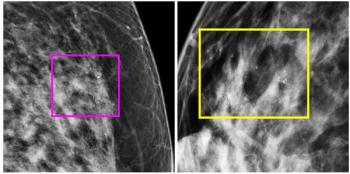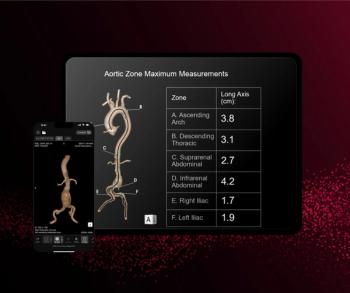
Reality targets ultrasound OEMs
Ultrasound manufacturers are adept at image acquisition and displaytechnology, but these skills may not be pertinent to the developmentof three-dimensional and other image processing techniques. Vendorsmight be well-advised to outsource this technology
Ultrasound manufacturers are adept at image acquisition and displaytechnology, but these skills may not be pertinent to the developmentof three-dimensional and other image processing techniques. Vendorsmight be well-advised to outsource this technology rather thaninvest in internal development, according to Robert H. Wake, presidentof Reality Imaging.
Reality, a supplier of 3-D ultrasound technology, is targetingOEMS in this emerging field. The Solon, OH, firm was the onlyindependent 3-D company displaying its wares at the February meetingof the American Institute of Ultrasound in Medicine in Atlanta.Although Reality has a number of OEM agreements with multimodalityvendors, it is still seeking its first dedicated ultrasound customer,Wake told SCAN.
The firm's largest OEM customer is Toshiba, which uses a freestanding3-D workstation for its magnetic resonance imaging line. OtherOEMs incorporate Reality's Voxel Flinger 3-D processing engineinto their equipment. Over half the company's sales are to scannervendors, he said.
There is no 3-D ultrasound system commercially available inthe U.S. market. Both Acoustic Imaging and Philips (see followingstory) have shown 3-D images, but are at least a year from commercializinga product. Kretztechnik of Austria has built a 3-D ultrasoundunit that is awaiting FDA market approval.
Development of 3-D ultrasound has lagged behind other imagingmodalities for technological and economic reasons, Wake said.
"The technical problems are easier with CT. Ultrasoundcan be intimidating. It produces a tremendous volume of data ina short time," he said.
Several years ago, 3-D workstations cost more than an entirehigh-end radiological ultrasound scanner. That pricing relationshiphas changed dramatically. Color-flow Doppler and other improvementsto scanner technology have increased the cost--and capabilities--ofhigh-end scanners, while workstation and 3-D technology has becomeless expensive, he said.
"They are moving in opposite directions. Three-D technologyis becoming more affordable," Wake noted.
Newsletter
Stay at the forefront of radiology with the Diagnostic Imaging newsletter, delivering the latest news, clinical insights, and imaging advancements for today’s radiologists.

























